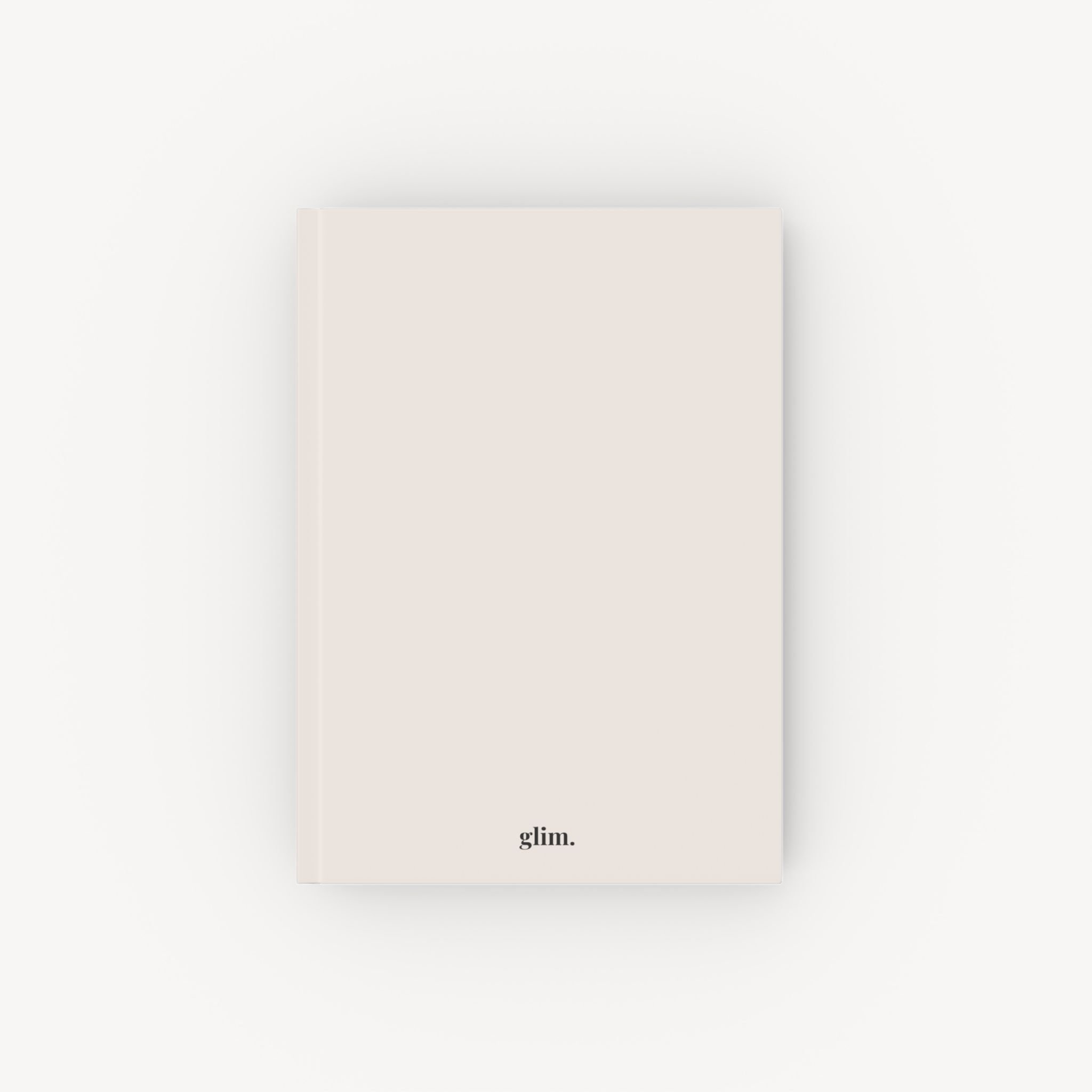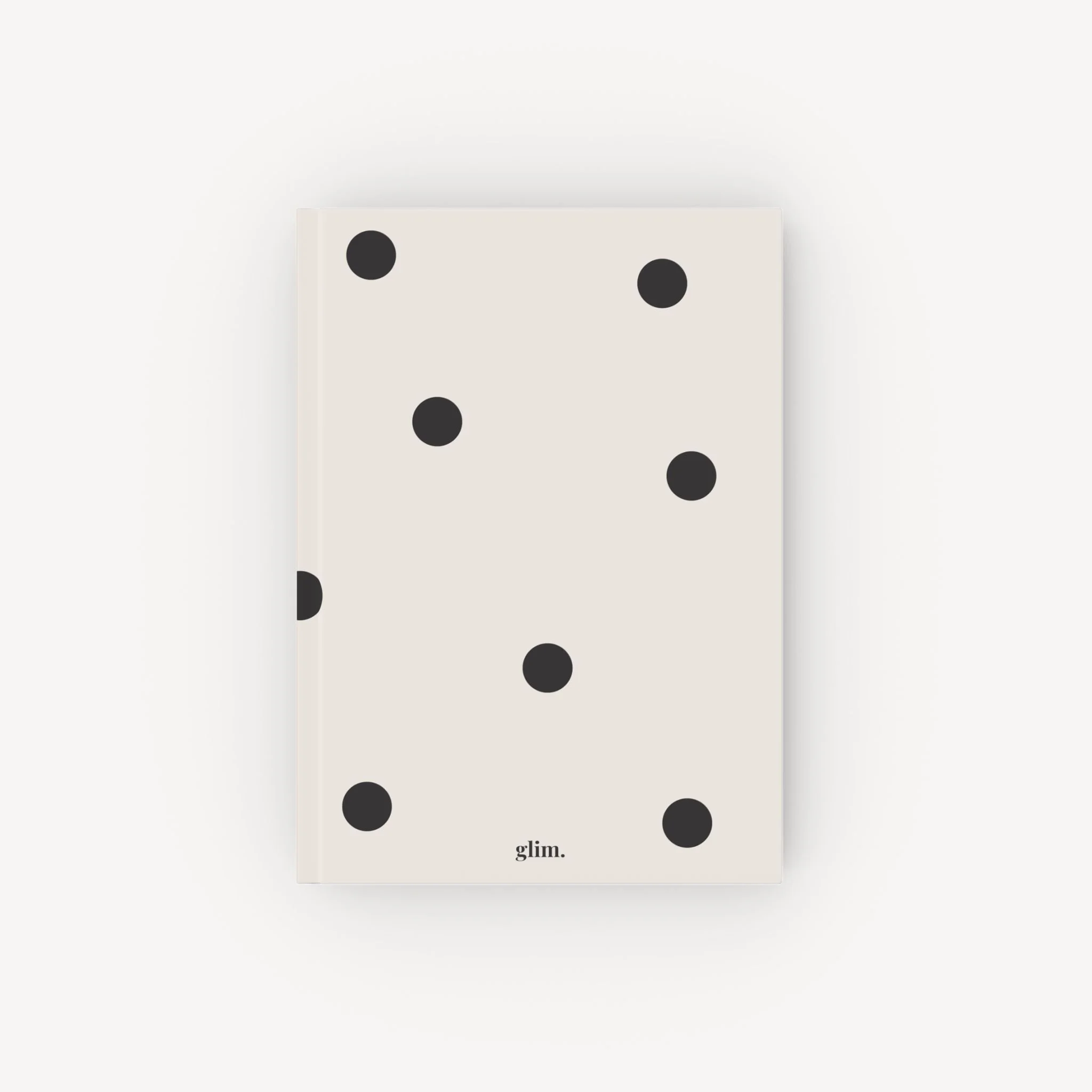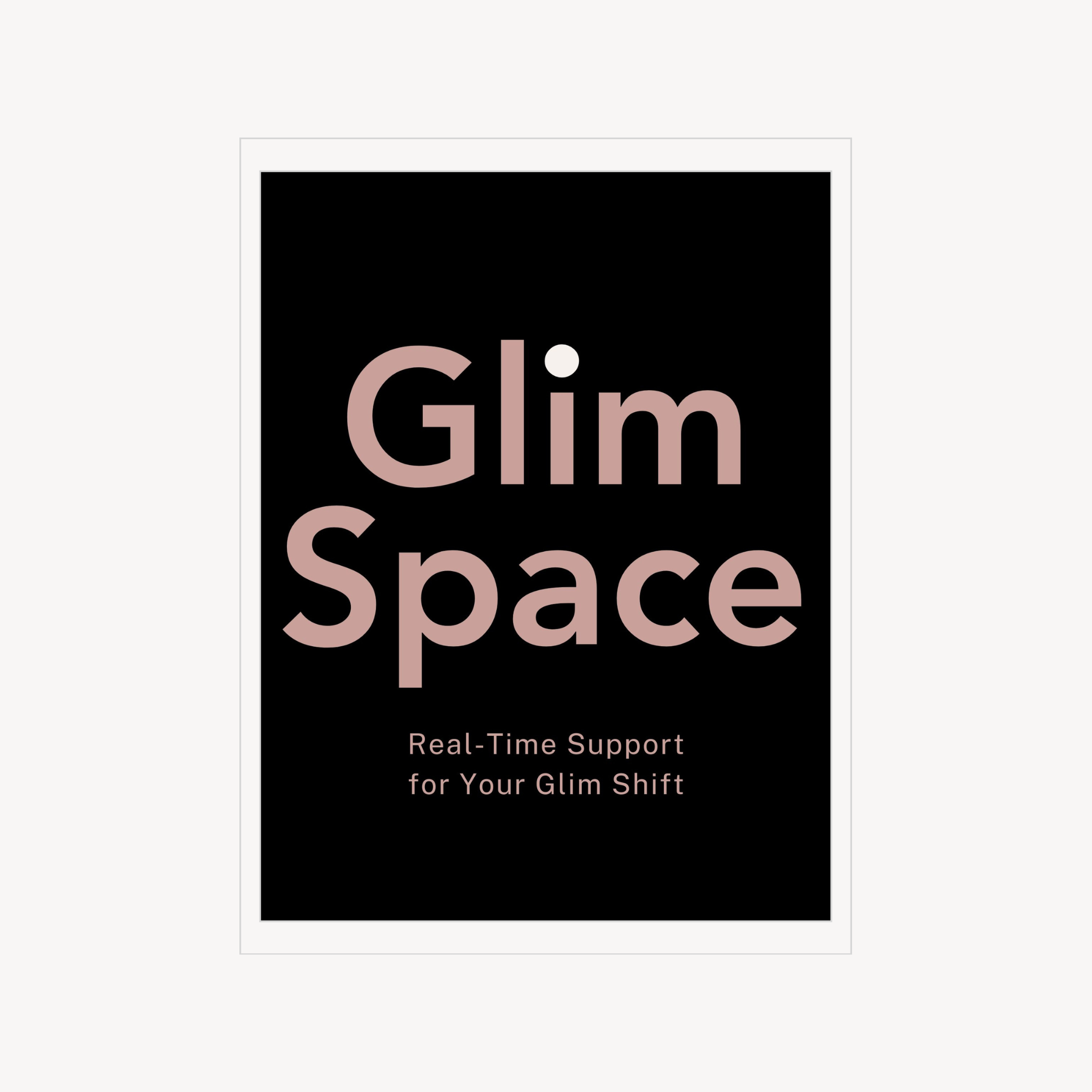7 Realistic Productivity Habits That Actually Work
Productivity doesn’t have to mean waking up at 5 am or using a colour-coded planner. It also doesn’t have to feel overwhelming, rigid, or exhausting.
Sometimes, the most effective productivity tips are the simplest, things like writing down your top three priorities for the day, protecting your peak focus hours, or taking a short two-minute break to reset your mind.
If you’ve ever felt discouraged by productivity advice that expects you to constantly do more, this approach is here to offer something different.
These simple, steady habits are designed to help you work with focus and intention, without sacrificing your well-being or rushing through your days.
They’re not about doing everything. They’re about doing what matters, at your own pace.
1. A Simple Daily Planning Method That Actually Works
One of the easiest ways to simplify your day, and begin with clarity, is by using The Glim Plan Method, a realistic approach to daily planning.
At the end of each day, take a few minutes to write down your key tasks for tomorrow. This method offers a clear framework:
1 Maximum Task: The most important thing you want to focus on tomorrow.
2 Medium Tasks: Meaningful tasks that support your well-being or personal growth.
3 Minimum Tasks: Helpful, low-pressure tasks that matter but don’t carry urgency.
4 Quick Tasks: Simple, short tasks that can easily be ticked off if time allows.
This isn’t about completing everything. Most days, you’ll simply focus on your top three, the maximum and medium tasks. Everything else is optional.
This simple daily planning method can help you focus on what matters most, reduce mental clutter, and bring order to your day.
2. How To Use Your Calendar for Realistic Time Management
Instead of relying on a traditional to-do list, try a more intentional approach: schedule your tasks directly into your calendar or planner.
This small shift can help you see your day more clearly and make it easier to avoid overcommitting.
By assigning each task a time slot, even loosely, you begin to shape your day around what’s realistic, rather than trying to squeeze everything in.
This approach creates structure without pressure. It allows you to see your time at a glance, stay grounded in what’s achievable, and free yourself from the overwhelm that often comes with a never-ending to-do list.
Whether you use a paper planner or a digital calendar, this method helps you manage your time in a calm, thoughtful way.
3. Protect Your Focus Time: How To Get More Done Without Burnout
If you’re often pulled in too many directions, protecting your peak focus time, your power hours, can change everything.
These are the times of day when your mind feels naturally clear and focused. During this window, focus on your highest priorities, your maximum and medium tasks, not emails, admin, or social media.
This isn’t about strict schedules. It’s about respecting your best energy.
Whether you plan digitally or with pen and paper, the format doesn’t matter. What matters is protecting your prime focus hours and making the most of them.
Even if you don’t think of yourself as a “planner,” simply knowing when you tend to focus best, and using that time wisely, can lead to steady, meaningful progress without burnout.
4. Start Small: The Easiest Way To Overcome Procrastination
If you often find it hard to honour your focus time, or you’re stuck in procrastination, there’s one simple, steady way to move forward: start with the easiest possible step.
This approach isn’t about forcing yourself to push through or finish everything. It’s about lowering the barrier to begin.
Here’s how it works:
Step 1: Estimate how long your most important task might take, and note what you need to get started. Don’t aim for precision here. This step isn’t about detailed planning. It’s simply to remove hesitation and help you feel prepared.
Step 2: Commit to just two minutes. That’s it. You don’t need to finish anything, you only need to start.
This low-pressure starting point often creates a natural sense of momentum. It helps break the invisible barrier that procrastination tends to build over time.
After those two minutes, you can stop, or keep going, depending on how you feel.
This is the Ridiculously Easy First Step, and it works.
Start small. Stay consistent. Let progress unfold one step at a time.
5. Add Small Movement Breaks To Boost Your Energy
When your focus starts to fade or your energy dips, a short movement break can make all the difference.
You don’t need a full workout. Even standing up and stretching for a minute or two can reset your mind and body.
Movement helps clear mental fog, sharpen focus, and lift your energy naturally. It’s not about intensity, it’s about reconnecting with your body throughout the day.
Try this:
Stand up and stretch for 30 seconds.
Take a short walk around your room.
Gently roll your shoulders or shake out tension from your hands and wrists.
Even one or two minutes of movement is enough to create a noticeable shift, helping you return to your work with a clearer mind.
This is one of the simplest productivity tips if you feel stuck at your desk or drained after long hours of sitting.
6. Create Clear Work and Rest Zones With Hot Spots and Not Spots
One of the simplest ways to boost your focus and protect your energy is by creating clear boundaries between work and rest, starting with your physical space.
Think of it this way:
Hot Spot → Not Spot
Your brain needs dedicated space to focus, and just as importantly, space to rest.
Here’s how to set it up:
Hot Spots: These are your work-focused areas. This is where deep work happens, whether it’s a home office, a desk, or even a specific seat at your kitchen table. Over time, your brain will begin to associate this space with focus and productivity. When you enter this space, it signals your mind: it’s time to work.
Not Spots: These are your rest zones. No work allowed here. Whether it’s your sofa, your bed, or a chair by the window, these spaces are where your body and mind can fully relax. When you enter your Not Spot, it’s a cue to exhale and reset.
These spaces don’t have to be large or elaborate. Even a small corner can become a Not Spot, as long as you respect its purpose.
What matters most is this: don’t blur the lines between work and rest. When you start checking emails in your Not Spot or working from bed, it becomes harder to truly focus or fully relax.
Keeping this boundary clear helps prevent burnout and protects your focus throughout the day.
This habit may seem simple, but it’s one of the most effective ways to strengthen your work-life balance and create structure in your routine.
7. Celebrate Small Wins To Build Lasting Motivation
One of the simplest, but most powerful, ways to stay motivated is to celebrate small wins.
It’s easy to overlook the little things that go well throughout the day. But these quiet, steady wins are often the foundation of long-term progress.
Small wins remind you that progress isn’t always loud or dramatic. It often grows slowly, through consistent effort and simple follow-through.
Here are a few examples of everyday wins worth noticing:
Making your bed in the morning
Completing ten minutes of focused work
Finishing a workout or stretching session
Drinking a full glass of water
Sending one important email or message you’ve been avoiding
Every time you acknowledge a small win, you reinforce a key message to your brain: you showed up, you followed through, you did one thing right.
Little wins, repeated often, create big change, one steady step at a time.
Celebrating small wins doesn’t have to be complicated. It should simply fit your life and feel enjoyable. Personally, I love celebrating through food, trying a new recipe or enjoying a favourite meal.
The point isn’t the reward itself, it’s about honouring your progress.
When you take time to notice your wins, you’re teaching your brain to stay motivated. It’s not just about willpower or discipline, it’s a form of positive reinforcement.
Small wins build momentum. They help you keep going, even when progress feels slow.
So take a moment to celebrate your wins today, however small they may seem, and notice what begins to shift.
Tiny Glims is a free weekly reset checklist included with The Eliane Luella Monthly. If you want a little extra support this month, it’s the easiest place to start.





